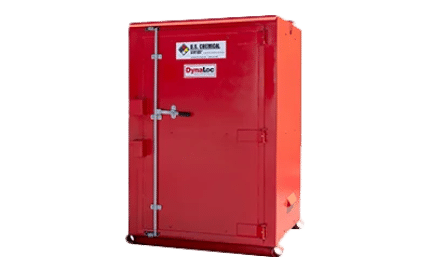Chemical Storage Building Doors


Storage building with double roll-up doors
Types of Doors
Swing Doors
U.S. Chemical Storage swing doors are third-party listed and factory assembled for maximum strength and durability. They are offered in single or double styles – which can be constructed of equal dimensions or a 60/40 active/inactive split.
All swing doors are equipped with UL-listed self-door closers, steel latch guards, positive pressure thresholds, and exterior UL-listed keyed locks. They are fully customizable to serve your material handling needs and the needs of your hazardous materials.
Roll Up Doors
Roll-up doors set the standard for strength and reliability. These doors are located – in most cases – on the front of the chemical storage building and are equipped with heavy-duty hardware for protection and safety. These doors are ideal for pallet and tote storage buildings, as well as for loading and unloading large items. Most are available in non-fire-rated versions, insulated versions to keep temperatures regulated, or fire-rated versions. They can be specified to utilize chain mechanisms that are manual or motorized – which can additionally be offered in regular and explosion-proof versions. Lockable slide bolts are included.
Sliding Doors
U.S. Chemical Storage sliding doors are suitable when entering and exiting often. Steel construction gives the sliding doors exceptional strength and durability. This door system consists of three panels set on overlapping tracks for easy and consistent opening and closing. While this is a seldom-seen design today, it is one we can achieve easily.
Standard DrumLoc and TurfLoc Doors
Each DrumLoc and TurfLoc door is made in our factory to provide a cost-efficient access door for each of these models. DrumLoc and TurfLoc doors can accept padlocks with a three-point locking system and include an interior safety override that allows egress from inside if necessary. These chemical storage building doors are available in single and double-leaf configurations.
Cutting Edge Wall Design
FireLoc™ flammable liquid storage buildings boast a tested and approved bi-directional design that has passed the fire test for 2-hours, 23-minutes, comes standard with R12 insulation in the cavity, and is rated to a wind load of at least 120 m.p.h. per ASCE-7-10.
Features & Benefits
- Also available in 54 inches by 60 inches
- Steel construction
- 3-point locking system
Common Applications
- Hazardous Waste Storage
- Flammable and Combustible Storage
- Paint and solvent Storage
Downloadable Information & Fact Sheets
- Drawing: 2-Hour Bi-Direction Fire Rated Building (FL6115)
- Design Your Explosive Storage Magazine
- Warranty on Building & Accessories
- Buy or Build Chemical Storage Brochure
- Infographic: Choosing a Chemical Storage Building
- FireLoc 1-page Sheet
Compliance & Approvals
At U.S. Chemical Storage we strive to give you the best solution for your operations. This building and its accompanying accessories can be engineered to meet the following approvals and certifications based upon your unique set of needs.
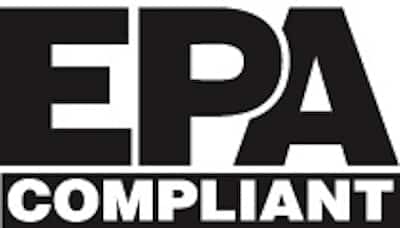
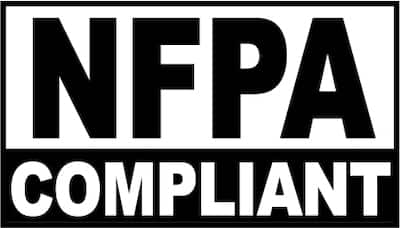


Frequently Asked Questions
First consult the Safety Data Sheet (SDS) to determine the type of chemical you’re storing and any storage requirements listed. There are two main classifications of buildings to consider: fire-rated and non-fire-rated steel buildings.
There are three main questions you should answer before engineering or design can begin on your building: what is to be stored, how much of it is being stored, and where is the location it will be stored? You will also need to consult with your local “Authority Having Jurisdiction” (AHJ) or local code expert to determine your area’s specific storage building requirements.
Our team at U.S. Chemical Storage has a wealth of knowledge, experience, and resources to help analyze your storage needs, but the final approval is made by the local AHJ, so you will need to ultimately ask them about your requirements early in the planning process.
The definition of a “sump” is a pit or reservoir providing containment for spilled liquids. U.S. Chemical Storage offers leak-proof spill containment sumps in each standard model. All our sumps are tested for leaks for a 24-hour period prior to finishing. The sump is then covered by a steel or fiberglass floor grating and can even be equipped with a resistant plastic sump liner to protect against corrosive chemical accidental spills. The size of the sump is dictated by code based on the volume of liquid being stored within the building.
Building size is determined by the amount of hazardous material you are planning to store, the need for occupancy or inspection around these materials, and must take into consideration the most efficient way of moving these materials into and out of your chemical storage building.
Location of the building can be either inside another building or outside to fit your needs. Fire Separation, which is the amount of fire rating required between two occupancies, or the separation distance between those two occupancies, is determined by the type of chemical or hazard being stored, and distances between buildings, egress pathways, or environmental features. To determine the required fire separation, it is best to consult with your local code authority. Inside another building or within 10 feet of another building, you’ll be required to have a 4-hour fire rating. If your hazmat storage building is located at distances 30 feet or greater your building may not be required to have a fire rating at all.
Request a Quote
OTHER TYPES OF OUTDOOR ACCESSORIES
Protection from Explosions
Explosion relief panels are available for the compliant storage or mixing and dispensing of Class 1A and 1B flammables.
Protection from Explosions
Explosion relief panels are available for the compliant storage or mixing and dispensing of Class 1A and 1B flammables.
Access Ramps
Access ramps are available with all buildings to allow for convenience when loading or unloading chemicals.
EXPLOSIVE STORAGE MAGAZINES
When dealing with explosives, safety is essential to a successful outcome. We offer several types of explosive magazine storage to prevent disasters and avoid fines. See All Explosive Storage >RELATED ARTICLES
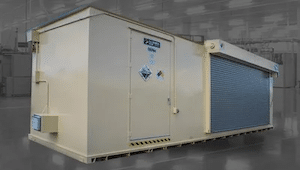
How To Store Lithium Batteries
Lithium batteries are often used in today’s electronic environments.
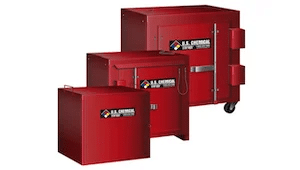
Explosive Storage Magazines
Prevent accidents by storing your high and low explosives properly.

Pharma Hazmat Storage
This manufacturing process needed a compliant 90 day storage solution.




